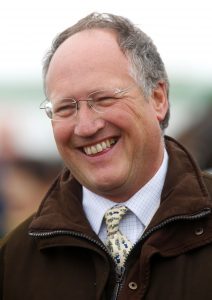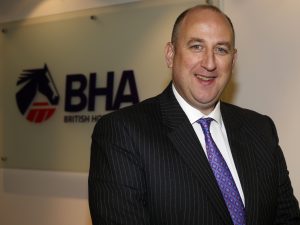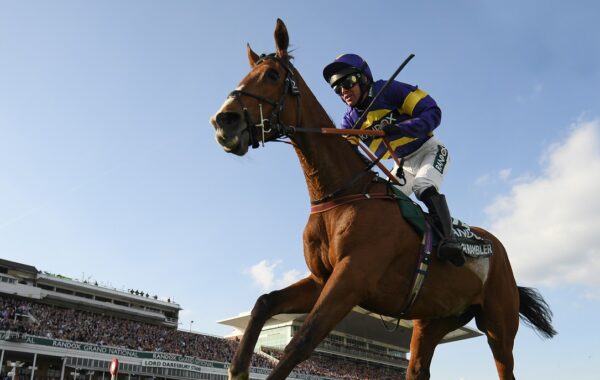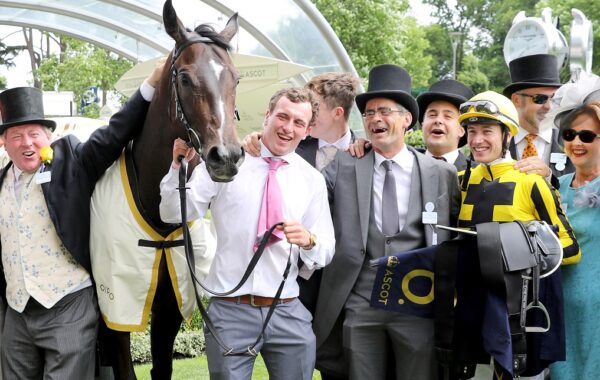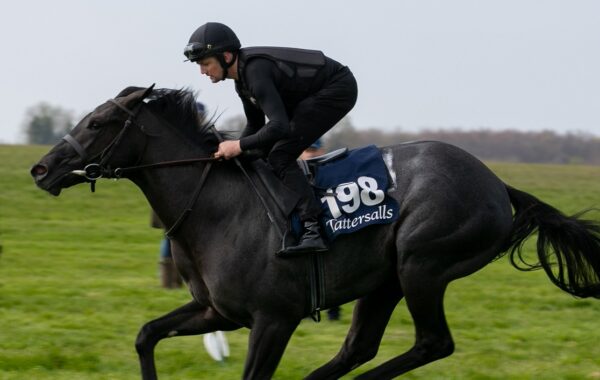Steve Harman succeeded Paul Roy as Chairman of the British Horseracing Authority in July 2013. He arrived relatively unknown, armed with a vision and the blueprint for a strategy for growth.
Looking back over his first term of office, he sets out the four areas that commanded his immediate attention.
“They were to get a clear, self-help strategy for growth in the industry, because in the context of early 2014 there was a big question over racing’s financial stability and participation levels were not going the right way; to get the appropriate BHA board and executive team in place to help the industry, particularly with a focus on grass roots development; to simplify the governance structure; and to professionalise and make relevant our approach to Westminster.”
We quizzed him on progress so far…
Take the growth strategy – where does that stand three years on?
In the first place I should explain why we needed one – for the simple reason that we didn’t have one, and external influences felt we needed a more self-help approach. All the measures were going the wrong way, so the strategy had three elements – the ‘table stakes’, an American business expression for the basics, the things you just have to get right; then growth levers, and finally enablers.
Taking the table stakes first, we have put equine welfare top of our agenda. We’ve increased research funding; we’re bringing in lifetime monitoring; we’re defining welfare better, putting more focus on Retraining of Racehorses, and by Christmas we’ll have a fresh equine and welfare strategy, with more money going in.
Another table stake is staffing, which is of huge importance, and here we set up a new team to help the industry recruit, retain and retrain staff, trying to ensure that career propositions are attractive. Already there is progress because we’re getting into universities, equine colleges and schools more aggressively.
People welfare is another important area. We’re moving towards injury rehabilitation for all stable staff, racing school instructors going outside their areas, there’s been a big push on mental health and nutrition, and we’re moving towards introducing a ground-breaking insurance policy across the whole industry.
On top of that we’re examining how to do more to get the proposition of a career in racing more attractive, so we’re looking at child-minding, housing, medical support and so on.
What about growth itself and the enablers – what’s the evidence here?
Growth is all about participation, for which we had four objectives: more horses in training, betting, attendance and new income.
Looking at some of the outcomes, in 2016 we had the first increase in the number of owners for seven years, mainly through partnerships and syndicates. In 2015-16 betting on racing grew for the first time since 2011.
The British foal crop rose by 5% in 2015 and continues to rise this year, which is the first time this has happened since 2008. And racecourse attendances are robust, despite a bump in the second quarter, which can probably be put down to poor weather.
The biggest enabler has been the Members’ Agreement between the BHA, racecourses and the horsemen, which has enabled us to operate across the industry with strong support from all constituents.
By Christmas we’ll have a fresh equine and welfare strategy, with more money going in
What are the key performance indicators for the other three strands?
We’ve put a really good team together, very much focused on knowledge of the horse and the grass roots, and being committed to people who work in the sport. We changed the board, all bar one, and they work quietly, with humility and supporting all parts of the industry in a practical way. A modern board isn’t just about going to meetings; it’s about helping the industry outside the boardroom.
And it’s not just about the BHA. If you look at other leaders in the industry, there are a lot of really good people. Changing the governance structure and bringing in the Members’ Agreement took longer than I’d hoped, but some other sports now look at this and the Members’ Committee and ask me how they can get there.
It’s still in its early stages, but look at some of the things we’ve had to address already – government policy, getting the fixture list through pretty quickly, looking at the whole welfare agenda for equines and people, big issues around Approved Betting Partners.They’re all meaty subjects, and there’s more crunchy stuff to come, so it will only be properly tested at the end of 2017, but the spirit and atmosphere among the members is very good.
The people on the Members’ Committee and the Executive Committee know the distinction between being a stakeholder and being a representative for the future of the industry. Egos – if there are any – have to be left outside the door and the focus is on working together. The school report would be ‘good first year.’
On the question of Westminster, the general feeling at the end of 2013, with a few exceptions, was that racing was elitist and a ‘hand-out’ industry. We went through a significant programme with members of the Lords and Commons, talking about the industry, its 85,000 jobs, the grass roots, welfare, training, investment, informing people and building a knowledge base that this is a seriously big industry, a grass-roots and rural industry, which touches way more than 85,000 people. I wouldn’t say everything has gone 100%, but it’s gone reasonably well.
How do you rate Nick Rust’s performance as Chief Executive?
I’ve hired about a dozen Chief Executives and Nick is right up there with the best of them. He’s approachable, accessible, passionate, compelling, intelligent, knowledgeable and incredibly trustworthy, with absolutely no side to him. He’s also a great leader.
The whole culture he is trying to lead, around transparency, accountability and accessibility, is a very important point.
Looking at your own position, you seem to have made a seamless transition into a second term but without any formal announcement. Is that a communications failure?
No, it’s humility. My second term was ratified in December/January, a long time ahead. For a chairman’s extension, the shareholders need to ratify it and the stakeholders need to know what’s going on, but making a big song and dance is not my style. Maybe I got it wrong.
The biggest issue of the moment is levy reform or replacement. Could you be accused of being over-confident about the prospect of the government’s acting in April 2017?
I could be – but you have to remember that the first real impact on levy reform was in 2014, when the DCMS and the government agreed that the levy needed to be reformed and they made some statements along those lines.
So the media recognition that came in late 2015 was because it was going to happen quite soon and we knew how it would happen, but the first push was in 2014, which is relevant to my confidence that levy reform will happen. Then there was George Osborne’s Budget statement in March 2015, so this has been a cross-party, verbal and written commitment for two years.
What are you hoping for from levy reform, and what are the likely risks to achieving them?
There were five things we were looking to achieve. First was for all bookmakers to contribute to the funding of British racing, and levy reform will achieve that. The second was urgently tackling the levy ‘cliff’, the huge loss of levy, and that’s being tackled with the forecast date of April 2017.
The third was to obtain a sustainable solution with long-term certainty, which is part of the government commitment. The fourth was that all funds are controlled by racing, which is there. And the fifth was that the architecture of the levy rate should ensure that the yield is restored to pre-leakage levels, and that word ‘restored’ has been used in many government communications in the last 12 months.
One of the risks in the next few months is that we hit a bump in Europe over state aid, which we think is unlikely. There’s also a risk of a short delay, it might be six months or 12 months, and there’s a risk that the architecture of the rate is not absolutely top drawer, not what we are really aiming for.
The Members’ Committee is discussing the need for a hybrid rate, based around betting operators’ revenue and gross profits.
Having any rate based purely on gross profits would be very bad news for racing, because many bookmakers use racing as a signpost into football or poker, so having a pure rate on gross profits would not be ideal.
In summary, there’s a risk of a small delay and not getting quite as much from the new structure as we’d like, but I am absolutely confident that the levy will be replaced pretty soon, that it will be sustainable, that all participants will pay and that the racing authority will distribute the funds.
Can you explain how racing will distribute the funds?
A racing authority will take over spending from the Levy Board; a working group has been working on the construct for a number of months.
We need to learn from our mistake [in the Jim Best case], which has cost us time and money
It’s another feather in the cap of the Members’ Committee, because you couldn’t have imagined such amicable discussions taking place three years ago. It’s a huge step for racing to decide where the money goes.
The most contentious issue with bookmakers has been Authorised Betting Partners. Has that concept increased the risk in any areas of ambition for a levy replacement?
ABPs have achieved a number of things. Of the 170 licensed bookmakers, four major retailers are not happy. I understand that. If I was in their position, I’d probably say the same as they do. But it’s been a very positive signal to a number of parties, by providing much-needed interim funding, by giving benefits, and demonstrating how racing can move forward together.
If you look at the top 20 bookmakers on revenue, we have extremely strong relationships with the majority. If you focus only on the four retailers who are not ABPs, I would count many of their senior people as my friends. These bookmakers are very highly capitalised and their view is that they are already paying enough to racing. That’s their view and I respect it. I happen not to agree, but our door remains open for discussions.
How do you view the BHA’s record on integrity over the last three years?
Integrity and regulation were part of the table stakes we’d identified, where we needed a fresh look at how we manage and lead some of those areas.
When Nick Rust arrived, we brought in Sir Paul Stephenson, one of the best policemen this country has produced, as a BHA director and he and others worked tirelessly on an integrity review since July 2015.
There was huge consultation – the review itself was independently reviewed by a panel of experts from outside racing. Those results confirmed there was a good level of integrity across most of British horseracing but also concluded there were areas for improvement.
If you look at the headlines across cricket, football and cycling, for instance, there’s a huge increase in the focus on sports integrity, and other sports are asking for our help, because racing has gone through massive issues surrounding such as illegal betting, doping and money-laundering.
These are risks that would destroy a sport, yet the integrity review confirmed that British racing is doing a pretty good job, while the areas that needed improving were such as intensity of activity, like more stringent drug testing or stronger data linkage with online bookmakers.
However the review also highlighted the need to look at the disciplinary and connected processes, such as panels. That work has been accelerated and will be completed this month.
The issue of disciplinary panels and their composition exploded in the wake of the Jim Best case, and the BHA seemed to be backed into a state of silence. What went wrong?
I’m completely aware that we are receiving criticism for our approach, and we are listening. Some of that criticism comes from outside the industry, and to minimise it would be arrogant.

Racing’s relationship with bookmakers – the big retailers at least – has been strained by the Authorised Betting Partner policy
If I go out and say, ‘This is a technicality which we got wrong and it’s cost us some money and time,’ it sounds like I’m minimising it. The reality is that we’re not burying our heads in the sand. We are committed to full transparency at the right time, when the Best case is resolved.
Many inside and outside the sport believe we’ve been overly cautious; even some barristers have said we should get on the front foot, and there is a level of frustration among some industry stakeholders that we haven’t done that. Some barristers said we should say nothing.
I do get why stakeholders and others say we should get out there and say this was a procedural error, a big one, but we’ve apologised and there’s nothing more sinister than that, although as any decent regulator should, we need to learn from our mistake, which has cost us time and money.
How do you view the future?
I came into racing as an outsider, and I love the sport and the industry. Contrary to some feedback, I don’t think I have a huge chip on my shoulder, but I do believe the grassroots are front and centre much more than they were, and the growth strategy work will gather pace over the next 12 months. The government is in a good place about the levy replacement, as well as about other things that we can do, such as jobs and investment.
After Brexit, we’re going to have to make sure we get into slick, efficient visa application processes for jobs that we create, and the exchange rate position may help foreign buyers. In terms of a reduction in discretionary spend, there may be a short-term bump, which affects such as bloodstock sales and racecourse attendances – but probably not betting.
All in all, though, we can build on the early shoots of growth. Despite the fact the BHA has had reputation hits, the reason I’m feeling confident is that I can see things actually happening. There are hard, concrete plans in place, not just views, reviews and ideas about projects. So I’m feeling very positive.



